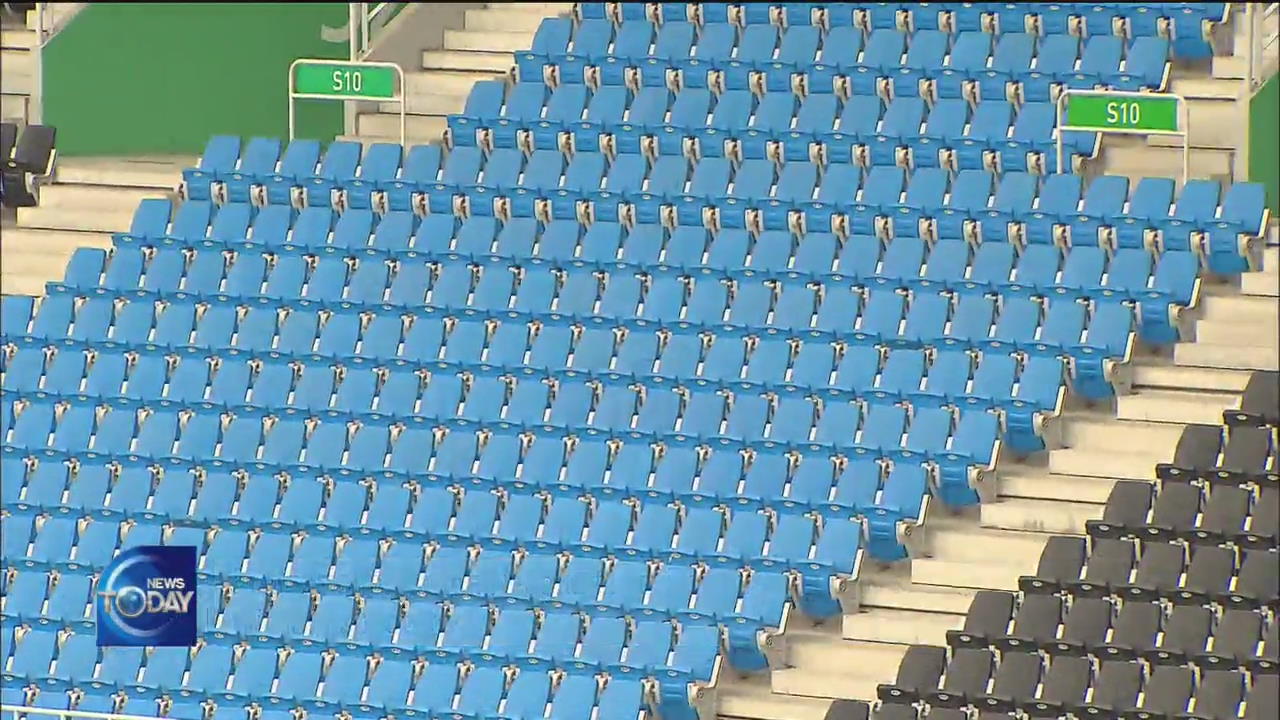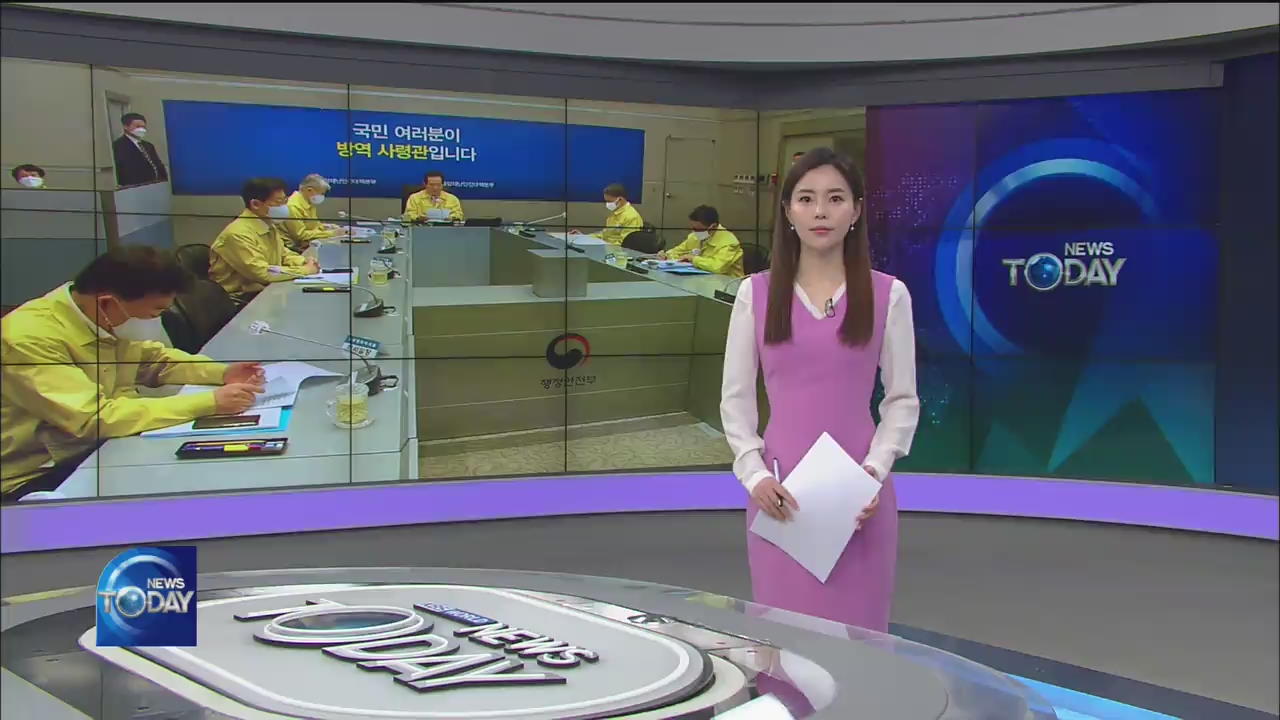CHANGES IN RESTAURANT SCENES AMID VIRUS
입력 2020.04.21 (15:37)
수정 2020.04.21 (16:47)
읽어주기 기능은 크롬기반의
브라우저에서만 사용하실 수 있습니다.
[Anchor Lead]
COVID-19 has also affected the restaurant business with food deliveries becoming a new norm amid the pandemic. Take a look at some of the changes ranging from shared kitchens to early morning deliveries.
[Pkg]
Lunchtime is when delivery orders pour in. At this burger restaurant, meat patties go on freshly baked heart-shaped buns. Right next door at a Korean restaurant, the local dish Japchae -- a combination of stir-fried meat, noodles and vegetables -- is being cooked. This is what's called a shared kitchen where some 20 different restaurants share cooking spaces about the size of one room. They have gotten rid of eating spaces for customers and are focused mainly on deliveries.
[Soundbite] LEE JAE-SUN(SHARED KITCHEN RESTAURANT OWNER) : "We began deliveries and sales jumped 30% and realized that turning profits is possible solely through deliveries."
As restaurants are struggling to survive due to the coronavirus outbreak, inquiries about joining these shared kitchens have more than doubled.
[Soundbite] HAN GI-JIN(SHARED KITCHEN RESTAURANT OWNER) : "Shared kitchens are light on initial expenses. We also gain experience in advance for when we want to open our own store later."
With delivery being the main mode of operation these days, its format is also evolving. This Italian restaurant has been doing business at this location for 17 years. Its top menu items have been developed into easy to eat dishes for early-morning delivery. The number of customers has plunged since the outbreak and so the restaurant has reduced eating space while increasing the kitchen area and expanding its delivery menu.
[Soundbite] KIM JU-HWAN(FOOD SERVICE INDUSTRY EXECUTIVE) : "The business environment is getting tougher. So we took the measures in order to maintain our business and our venue."
Amid cutthroat competition and the fast changing market environment, the food service industry is also facing a new turning point as it shifts from its traditional business structure.
COVID-19 has also affected the restaurant business with food deliveries becoming a new norm amid the pandemic. Take a look at some of the changes ranging from shared kitchens to early morning deliveries.
[Pkg]
Lunchtime is when delivery orders pour in. At this burger restaurant, meat patties go on freshly baked heart-shaped buns. Right next door at a Korean restaurant, the local dish Japchae -- a combination of stir-fried meat, noodles and vegetables -- is being cooked. This is what's called a shared kitchen where some 20 different restaurants share cooking spaces about the size of one room. They have gotten rid of eating spaces for customers and are focused mainly on deliveries.
[Soundbite] LEE JAE-SUN(SHARED KITCHEN RESTAURANT OWNER) : "We began deliveries and sales jumped 30% and realized that turning profits is possible solely through deliveries."
As restaurants are struggling to survive due to the coronavirus outbreak, inquiries about joining these shared kitchens have more than doubled.
[Soundbite] HAN GI-JIN(SHARED KITCHEN RESTAURANT OWNER) : "Shared kitchens are light on initial expenses. We also gain experience in advance for when we want to open our own store later."
With delivery being the main mode of operation these days, its format is also evolving. This Italian restaurant has been doing business at this location for 17 years. Its top menu items have been developed into easy to eat dishes for early-morning delivery. The number of customers has plunged since the outbreak and so the restaurant has reduced eating space while increasing the kitchen area and expanding its delivery menu.
[Soundbite] KIM JU-HWAN(FOOD SERVICE INDUSTRY EXECUTIVE) : "The business environment is getting tougher. So we took the measures in order to maintain our business and our venue."
Amid cutthroat competition and the fast changing market environment, the food service industry is also facing a new turning point as it shifts from its traditional business structure.
■ 제보하기
▷ 카카오톡 : 'KBS제보' 검색, 채널 추가
▷ 전화 : 02-781-1234, 4444
▷ 이메일 : kbs1234@kbs.co.kr
▷ 유튜브, 네이버, 카카오에서도 KBS뉴스를 구독해주세요!
- CHANGES IN RESTAURANT SCENES AMID VIRUS
-
- 입력 2020-04-21 15:38:45
- 수정2020-04-21 16:47:28

[Anchor Lead]
COVID-19 has also affected the restaurant business with food deliveries becoming a new norm amid the pandemic. Take a look at some of the changes ranging from shared kitchens to early morning deliveries.
[Pkg]
Lunchtime is when delivery orders pour in. At this burger restaurant, meat patties go on freshly baked heart-shaped buns. Right next door at a Korean restaurant, the local dish Japchae -- a combination of stir-fried meat, noodles and vegetables -- is being cooked. This is what's called a shared kitchen where some 20 different restaurants share cooking spaces about the size of one room. They have gotten rid of eating spaces for customers and are focused mainly on deliveries.
[Soundbite] LEE JAE-SUN(SHARED KITCHEN RESTAURANT OWNER) : "We began deliveries and sales jumped 30% and realized that turning profits is possible solely through deliveries."
As restaurants are struggling to survive due to the coronavirus outbreak, inquiries about joining these shared kitchens have more than doubled.
[Soundbite] HAN GI-JIN(SHARED KITCHEN RESTAURANT OWNER) : "Shared kitchens are light on initial expenses. We also gain experience in advance for when we want to open our own store later."
With delivery being the main mode of operation these days, its format is also evolving. This Italian restaurant has been doing business at this location for 17 years. Its top menu items have been developed into easy to eat dishes for early-morning delivery. The number of customers has plunged since the outbreak and so the restaurant has reduced eating space while increasing the kitchen area and expanding its delivery menu.
[Soundbite] KIM JU-HWAN(FOOD SERVICE INDUSTRY EXECUTIVE) : "The business environment is getting tougher. So we took the measures in order to maintain our business and our venue."
Amid cutthroat competition and the fast changing market environment, the food service industry is also facing a new turning point as it shifts from its traditional business structure.
COVID-19 has also affected the restaurant business with food deliveries becoming a new norm amid the pandemic. Take a look at some of the changes ranging from shared kitchens to early morning deliveries.
[Pkg]
Lunchtime is when delivery orders pour in. At this burger restaurant, meat patties go on freshly baked heart-shaped buns. Right next door at a Korean restaurant, the local dish Japchae -- a combination of stir-fried meat, noodles and vegetables -- is being cooked. This is what's called a shared kitchen where some 20 different restaurants share cooking spaces about the size of one room. They have gotten rid of eating spaces for customers and are focused mainly on deliveries.
[Soundbite] LEE JAE-SUN(SHARED KITCHEN RESTAURANT OWNER) : "We began deliveries and sales jumped 30% and realized that turning profits is possible solely through deliveries."
As restaurants are struggling to survive due to the coronavirus outbreak, inquiries about joining these shared kitchens have more than doubled.
[Soundbite] HAN GI-JIN(SHARED KITCHEN RESTAURANT OWNER) : "Shared kitchens are light on initial expenses. We also gain experience in advance for when we want to open our own store later."
With delivery being the main mode of operation these days, its format is also evolving. This Italian restaurant has been doing business at this location for 17 years. Its top menu items have been developed into easy to eat dishes for early-morning delivery. The number of customers has plunged since the outbreak and so the restaurant has reduced eating space while increasing the kitchen area and expanding its delivery menu.
[Soundbite] KIM JU-HWAN(FOOD SERVICE INDUSTRY EXECUTIVE) : "The business environment is getting tougher. So we took the measures in order to maintain our business and our venue."
Amid cutthroat competition and the fast changing market environment, the food service industry is also facing a new turning point as it shifts from its traditional business structure.
이 기사가 좋으셨다면
-
좋아요
0
-
응원해요
0
-
후속 원해요
0

















이 기사에 대한 의견을 남겨주세요.